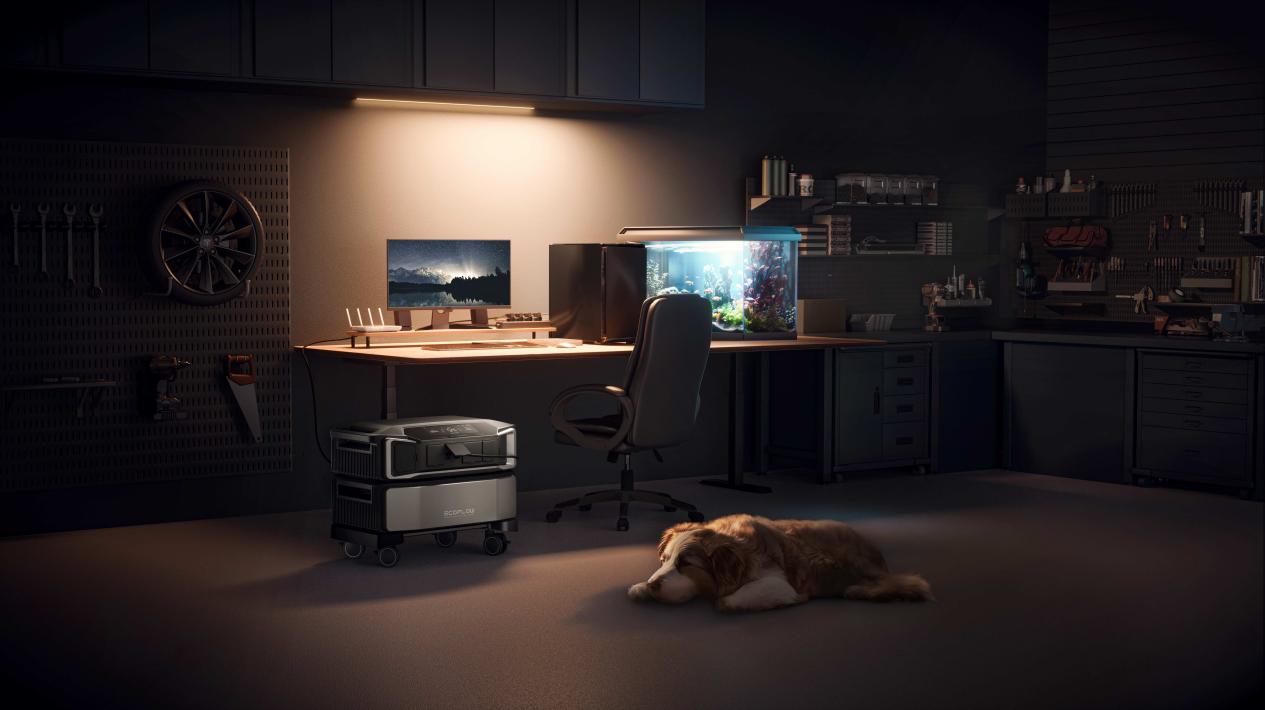- An Aging System on the Brink
- The Coming Surge: Why America's Power Grid Is Under Pressure
- Where Does the Power Go? Your Home's Biggest Energy Users
- The Old Way of Dealing with Outages (And Its Flaws)
- A Smarter Solution: The Rise of the Home Battery
- What You Can Do: Practical Steps for Energy Resilience
- Conclusion
- Frequently Asked Questions (FAQ)
Record High US Power Consumption: Backup Power for Grid Strain and Outages
- An Aging System on the Brink
- The Coming Surge: Why America's Power Grid Is Under Pressure
- Where Does the Power Go? Your Home's Biggest Energy Users
- The Old Way of Dealing with Outages (And Its Flaws)
- A Smarter Solution: The Rise of the Home Battery
- What You Can Do: Practical Steps for Energy Resilience
- Conclusion
- Frequently Asked Questions (FAQ)
You depend on a constant flow of electricity. But the system that delivers your power faces unprecedented strain. The U.S. Energy Information Administration (EIA) projects power consumption will hit a record 4,187 billion kilowatt-hours in 2025. New technologies drive this surge, which puts immense pressure on an aging power grid and increases your risk of outages. This raises a critical question: how do you plan to power your home?
An Aging System on the Brink
The U.S. power grid is an engineering marvel, a vast network of power plants and transmission lines. It is also dangerously old. The country built much of this vital system in the 1950s and 60s with a 50-year lifespan. Today, many components operate far beyond their intended service life.
This age creates inherent fragility. Older equipment operates inefficiently and is far more likely to fail under stress. The entire country’s power supply rests on this aging foundation—a system already vulnerable before the coming demand surge even begins.
The Coming Surge: Why America's Power Grid Is Under Pressure
The forecast for record-breaking power use signals major shifts in our economy and lifestyle. Several powerful trends, all converging at once, drive this historic demand.
The Digital Economy's Appetite for Power
The modern digital economy builds on a foundation of electricity, and its hunger grows daily. The rapid expansion of artificial intelligence (AI) and data centers is a primary driver. The International Energy Agency (IEA) projects that global electricity demand from data centers will more than double by 2030. These high-powered facilities run 24/7 and create a massive, continuous new load on the grid.
The Shift to an All-Electric Lifestyle
You are a key part of the other major driver: electrification. More Americans switch to electric vehicles (EVs) and replace gas furnaces with electric heat pumps. This shift to electricity is a positive step for the environment, but it places the energy burden squarely on the electrical grid. This increases the daily strain, especially in residential areas.
A Climate of Extremes
This new demand stresses a grid that engineers never built for today’s climate. Extreme weather—from scorching summer heatwaves to severe winter storms—now occurs more frequently and intensely. These events push the grid to its breaking point, cause equipment to fail, and lead to a sharp increase in major power outages.
Where Does the Power Go? Your Home's Biggest Energy Users
While data centers and EVs are major factors, the daily habits and appliances in your own home contribute significantly to the overall demand. When you understand where your electricity goes, you can take the first step to control it.
Climate Control: The Unseen Energy Giant
- The Appliance: Your heating, ventilation, and air conditioning (HVAC) system is the single largest energy consumer in your home. It often makes up nearly half of your utility bill because its powerful motor and compressor must move massive amounts of air.
- Your Habits: You waste a tremendous amount of electricity when you set your thermostat a few degrees too low in the summer or too high in the winter. If your home has poor insulation or drafty windows, you essentially pay to heat or cool the outdoors and force your HVAC system to work overtime.
Water Heating: The Constant Demand
- The Appliance: Your electric water heater is another top energy user. It works 24/7 to keep dozens of gallons of water hot, an action that requires a constant supply of power.
- Your Habits: You increase your electricity consumption when you set the water heater’s thermostat above the recommended 120°F (49°C). Long, hot showers or routine use of hot water for laundry also contribute to excessive energy use.
The "Always-On" Home and Phantom Power
- The Appliances: Look around your home. Your TV, game console, computer, and various chargers likely draw power right now, even if you have turned them "off." This is "phantom" or standby power.
- Your Habits: You pay a cost for the convenience of leaving everything plugged in. These always-on devices can account for up to 10% of your household's electricity use. Each small glowing light creates a constant drain on your power.


The Old Way of Dealing with Outages (And Its Flaws)
For decades, the standard response to a power outage was a portable gas generator. It’s an imperfect solution with serious drawbacks.
- You depend on fuel: Generators require a constant supply of gasoline or propane, which is often unavailable during a widespread emergency.
- You face toxic fumes: Gas generators produce deadly carbon monoxide (CO) gas. You can never run them indoors, and even outdoor use requires extreme care.
- You deal with noise: The constant, loud drone of a generator adds stress to an already difficult situation.
- You must do the work yourself: During an outage, you have to manually set up, fuel, and start the generator, often in the dark or bad weather.
A generator is a demanding tool that introduces its own set of risks.
A Smarter Solution: The Rise of the Home Battery
You now have a modern, effective alternative: the home battery. This is your personal, rechargeable power bank for your entire house. A backup battery for home is a clean, quiet, and fully automatic system that delivers uninterrupted power the moment an outage occurs.
The system is simple. A certified professional installs and connects a battery to your electrical panel. You charge it with electricity from the grid or your own solar panels. When the battery detects an outage, it instantly takes over. The switch is so seamless your lights will not even flicker. Your refrigerator, Wi-Fi, and other essentials keep running without interruption.
Another flexible and powerful option within this category is the portable power station. These units offer substantial capacity and output without the need for professional installation. For example, a high-output model like the EcoFlow DELTA 3 Max Plus can deliver 3000W of power, enough to run multiple heavy-duty appliances at once. Its expandable capacity also means you can customize your setup for longer outages.
A home battery requires no fuel and produces zero emissions. It operates in complete silence and gives you true peace of mind.
What You Can Do: Practical Steps for Energy Resilience
Beyond securing your own backup power, you can take steps to reduce your energy use and help lessen the strain on the grid for everyone.
Adopt Energy-Efficient Practices
You can cut down on wasted electricity in your home. Switch to ENERGY STAR-rated appliances that use less power. Replace old incandescent bulbs with LED lighting, which consumes up to 75% less energy. Install a smart thermostat to optimize your heating and cooling and further reduce your energy consumption.
Be Mindful of Peak Usage
You can help the grid when you shift your power usage. Try to run high-energy appliances like your washer, dryer, and dishwasher during off-peak hours (usually evenings or weekends). Many utility companies offer time-of-use pricing that rewards you with lower rates when you use electricity when demand is low.


Conclusion
As America's power demand grows, our aging grid will face more challenges and make outages a regular part of life. Instead of waiting for the next blackout, you can take control of your energy security. A home battery provides the peace of mind that your family will stay safe and comfortable through any outage. Explore how a powerful and expandable solution like the EcoFlow DELTA 3 Max Plus can protect your home and secure your energy independence today.
Frequently Asked Questions (FAQ)
Q1. How long can a home battery actually power my house?
A: The runtime of your home battery depends on its capacity and what you choose to power. A typical installation can run essential appliances—like your refrigerator, lights, and Wi-Fi—for 8 to 24 hours. If you have a larger battery system or conserve energy, you can extend that runtime. For full energy independence during a multi-day outage, you can pair your battery with solar panels that recharge it daily with sunlight.
Q2. Do I need solar panels to use a home battery?
A: No, you do not need solar panels. You can install a home battery on its own and charge it directly from the electrical grid. This setup provides excellent backup power for outages. However, when you add solar panels, you create a more resilient system. It allows you to recharge your battery even when the grid is down and empowers you to keep your home powered for days at a time with only the sun.
Q3. What is the installation process for a home battery like?
A: Certified professionals always handle the straightforward process to ensure safety and performance. It typically involves three main steps:
- Consultation & Design: An expert assesses your home’s energy needs and electrical panel to design a system that’s right for you.
- Installation: A team of certified electricians installs the battery unit and connects it to your home's electrical system, usually in less than a day.
- Inspection & Commissioning: After installation, an inspector checks the system to ensure it meets local codes, and the team shows you how to monitor its performance.
Q4. Can a home battery save me money if my utility has flat electricity rates?
A: Yes, a home battery can offer financial benefits even with flat rates. While you won't save money by avoiding peak rates, some utilities offer programs that pay you to let them draw power from your battery during times of extreme grid stress. Additionally, when you install a backup battery for home, you significantly increase your property value and can sometimes qualify for tax incentives.
Q5. How should I manage my power usage during a long, multi-day outage?
A: During an extended outage, you must manage your energy smartly. First, power only your essentials. Turn off lights in unused rooms and unplug devices that are not critical. Monitor your battery’s charge level through its mobile app. If you have solar panels, your battery will recharge during the day. To maximize this, try to run larger appliances in the middle of the day when solar production is highest. This saves your stored battery power for the nighttime.